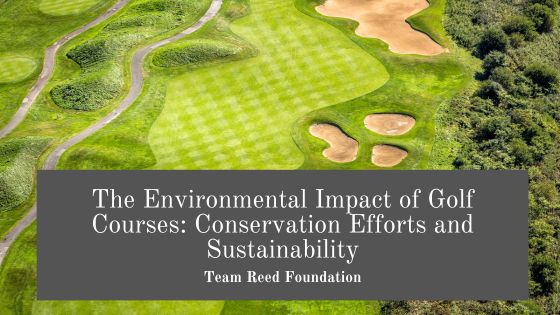Golf courses are beloved recreational spaces that offer a tranquil escape into nature for millions of players worldwide. However, the environmental impact of golf courses has been a topic of concern due to their extensive land use, water consumption, and potential habitat disruption. In recent years, golf course managers, environmentalists, and governing bodies have taken proactive measures to mitigate these environmental challenges and promote sustainability. In this blog post, we’ll explore the environmental impact of golf courses, discuss conservation efforts, and highlight sustainable practices aimed at minimizing their ecological footprint.
1. Land Use and Habitat Preservation
Golf courses typically cover vast expanses of land, often in ecologically sensitive areas such as wetlands, forests, or coastal zones. The development of golf courses can lead to habitat loss, fragmentation, and degradation, adversely affecting local biodiversity and ecosystems. To address these concerns, golf course developers and managers increasingly adopt conservation-minded land use planning and design approaches.
Modern golf course designs incorporate natural features such as wetlands, native vegetation, and wildlife corridors to enhance biodiversity and promote habitat preservation. By integrating sustainable landscaping practices and minimizing disturbance to natural habitats, golf courses can coexist harmoniously with local ecosystems and support wildlife populations.
2. Water Conservation and Management
Water usage is another significant environmental issue associated with golf courses, as they require large quantities of water to maintain lush green fairways and manicured landscapes. Excessive irrigation can strain local water resources, contribute to water scarcity, and impact aquatic ecosystems. To address these concerns, golf courses are implementing water conservation measures and adopting innovative irrigation technologies to minimize water consumption and promote efficient water management.
Many golf courses have installed state-of-the-art irrigation systems with weather sensors, soil moisture monitors, and computerized controls to optimize water usage and reduce waste. Additionally, courses are transitioning to drought-tolerant grass species, implementing water-efficient landscaping practices, and capturing rainwater for irrigation purposes. These initiatives help conserve water resources, minimize environmental impact, and ensure the long-term sustainability of golf course operations.
3. Chemical Management and Pesticide Reduction
Chemical usage on golf courses, including fertilizers, pesticides, and herbicides, can harm human health and the environment if not managed properly. Runoff from chemical applications can contaminate surface water, degrade soil quality, and harm non-target organisms. To minimize chemical impacts, golf courses are adopting integrated pest management (IPM) practices and reducing reliance on synthetic pesticides and fertilizers.
Integrated pest management involves monitoring pest populations, implementing cultural and biological control methods, and using chemical treatments as a last resort. Golf courses can reduce chemical inputs, protect ecosystem integrity, and promote ecological balance by promoting natural pest predators, enhancing soil health, and implementing targeted pesticide applications.
4. Community Engagement and Environmental Stewardship
In addition to on-site conservation efforts, many golf courses actively engage with local communities and environmental organizations to promote environmental awareness and stewardship. Through educational programs, outreach initiatives, and volunteer opportunities, golf courses raise awareness about ecological issues, showcase sustainable practices, and foster environmental responsibility among players, staff, and the broader community.
Furthermore, golf courses are increasingly participating in environmental certification programs, such as Audubon International’s Cooperative Sanctuary Program, which recognizes courses demonstrating a commitment to environmental stewardship and habitat conservation. By pursuing certification and implementing best management practices, golf courses can demonstrate their dedication to sustainability and serve as models for environmentally responsible land management.
Conclusion
While golf courses have historically been associated with environmental concerns, the industry is making significant strides toward greater sustainability and conservation. Golf courses can minimise their environmental impact and promote ecological resilience by adopting land use planning strategies that prioritize habitat preservation, implementing water conservation measures, reducing chemical inputs, and engaging with local communities. Through ongoing collaboration, innovation, and environmental stewardship, golf courses can continue providing enjoyable recreational experiences while preserving and protecting natural ecosystems for future generations.

